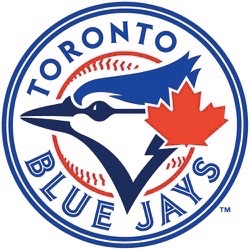 With the installation of dirt basepaths by the Toronto Blue Jays at Rogers Centre for the 2016 season, Major League Baseball takes another step toward a future nirvana of grass in every ballpark — for the first time since 1966.
With the installation of dirt basepaths by the Toronto Blue Jays at Rogers Centre for the 2016 season, Major League Baseball takes another step toward a future nirvana of grass in every ballpark — for the first time since 1966.
A small step, to be sure: all the Blue Jays are doing is tearing up the synthetic turf over the basepaths and infield, removing the concrete and filling with dirt. The cement floor at Rogers Centre in the basepaths will be removed, with 12 inches comprising layers of gravel, sand and clay will be installed in the excavated areas. All in all, an area of approximately 12,000 square feet will be configured to ensure proper moisture content and conditions suitable to a major-league playing surface. The infield and outfield will be unchanged, with AstroTurf 3D Xtreme (first installed in 2015) to remain.
The rest of the synthetic turf will remain in the infield and outfield. Rogers Centre was the last MLB ballpark to sport turf on the basepaths — Tropicana Field in St. Petersburg has always featured dirt basepaths — but now with the Toronto Argonauts moving to BMO Field, the Blue Jays are freed to tear up at least a portion of the synthetic turf. From the New York Times:
“I woke up one morning after two and a half years playing on that and said, What the hell is going on with my back and knees?” said Terry Pendleton, the Braves coach who played seven seasons at third base for the Cardinals on the artificial grass in St. Louis’s Busch Stadium. “I say, get rid of it all.”
Pendleton blames the unforgiving surface for three knee operations. In 1989, he played all 162 games, only 42 of them on real grass.
His fellow Braves coach Kevin Seitzer played on Kansas City’s own speed carpet for five years with the Royals and says five knee operations were a result.
“I’d like to see all stadiums have grass,” Seitzer said, adding: “I’d like to see them all have the same surfaces and same dimensions to make it all uniform and equalize the game. I know that will never happen.”
As mentioned, the move of the Argos to the home of MLS in Toronto does simplify things. Rogers Centre was designed to accommodate both MLB and the longer CFL field, which led to a unique grandstand that widened to make room for the 150-yard-long gridiron (NFL fields are 120 yards long) — a moveable grandstand that could not work with grass.
There are some other issues with Rogers Centre that have prevented the installation of grass. First, all that concrete needs to go and a proper drainage system installed. Second, the retractable roof is actually a seasonal roof: it won’t work early in the season because of ice and snow buildup. So there would need to be some sort of solution allowing grass to be grown in March for an April season start.
When that happens (and we are assuming it will), MLB will be down to one facility sporting synthetic turf — the aforementioned Tropicana Field. When the Rays finally move someday to a new facility (and we are assuming they will), MLB could be back to an all-grass ballpark lineup for the first time since 1966. Of course, that could be blown up if MLB expands and temporary facilities in Montreal and San Antonio, both sporting synthetic turf, are pressed into duty — but we’ll cross that bridge when it happens.
